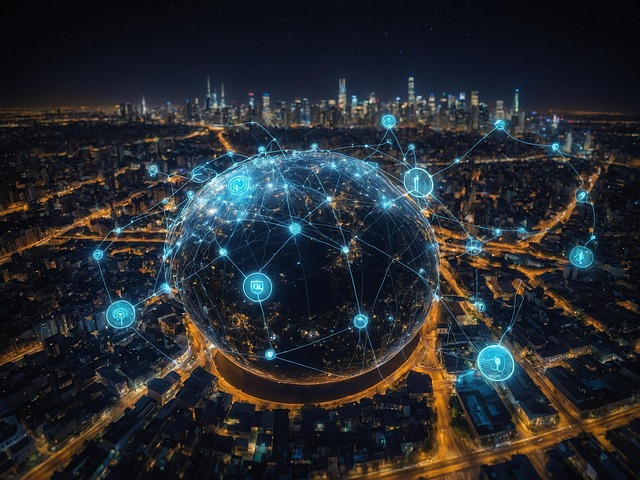AI real-time kitchen display systems are transforming food service operations through predictive analytics and automation. Using machine learning algorithms, these systems analyze historical data to optimize inventory management, order processing, and staffing, enhancing efficiency and reducing costs. By leveraging AI, culinary businesses can adapt quickly to market trends, improve customer satisfaction, and streamline workflows from ordering to preparation, making them more competitive in today's digital age.
“Discover the transformative power of Artificial Intelligence (AI) in revolutionizing business operations. This article explores how Machine Learning models can be tailored for diverse industry needs, focusing on a practical application: developing AI-driven real-time kitchen display systems. We’ll delve into understanding AI fundamentals and its potential for strategic business gains. Additionally, we’ll cover the process of creating efficient models, optimizing performance, and implementing these cutting-edge solutions to streamline daily operations.”
- Understanding AI and Machine Learning for Business Applications
- Developing Real-Time Kitchen Display Systems with AI
- Implementing and Optimizing AI Models for Efficient Operations
Understanding AI and Machine Learning for Business Applications

In today’s digital era, Artificial Intelligence (AI) and Machine Learning (ML) are transforming various industries, including business operations. AI real-time kitchen display systems are a prime example of this technological revolution in action, offering efficient and intelligent solutions for food service establishments. These systems leverage ML algorithms to optimize task management, enhancing productivity and accuracy in the kitchen. By analyzing historical data and patterns, the models can predict demand, automate inventory management, and streamline order processing, ultimately improving overall efficiency.
Understanding AI and ML is crucial for businesses aiming to stay competitive. These technologies enable data-driven decision-making, allowing companies to adapt quickly to market changes and customer preferences. For instance, in a kitchen setting, ML models can identify trends in menu items and customer feedback, prompting dynamic adjustments to the display systems’ recommendations. This integration of AI and ML ensures that business applications are not just automated but also adaptive and intuitive, fostering a more responsive and successful business environment.
Developing Real-Time Kitchen Display Systems with AI

Developing Real-Time Kitchen Display Systems with AI is transforming the culinary industry by streamlining operations and enhancing efficiency. These advanced systems leverage machine learning models to optimize tasks such as order tracking, ingredient management, and preparation workflows within bustling kitchens. By integrating AI, kitchen display systems can dynamically adjust to changing demands, ensuring orders are prepared accurately and promptly.
For example, AI algorithms can analyze historical data to predict peak ordering times, enabling efficient staffing and resource allocation. Real-time updates on ingredient availability and kitchen status allow managers to make informed decisions, minimizing waste and maximizing productivity. This not only improves customer satisfaction but also reduces operational costs, making it a game-changer for modern restaurants.
Implementing and Optimizing AI Models for Efficient Operations

Implementing and optimizing AI models is a critical step in enhancing business operations, particularly with AI real-time kitchen display systems. These advanced systems leverage machine learning algorithms to streamline workflows in culinary environments, from order processing to inventory management. By training models on historical data, such as previous orders, ingredient availability, and preparation times, the AI can make accurate predictions and suggest optimal cooking procedures, minimizing delays and enhancing overall efficiency.
Optimization involves fine-tuning these models through continuous learning. As new data becomes available—like changes in menu items or seasonal variations in ingredients—the AI models should be retrained to adapt. This ensures that the system remains accurate and effective, aligning with evolving business needs. Effective implementation leverages the power of real-time data visualization, allowing kitchen staff to quickly understand and act upon the AI’s recommendations, ultimately driving operational excellence.
AI and machine learning are transforming business operations, from streamlining processes to enhancing customer experiences. As demonstrated by the development of real-time kitchen display systems powered by AI, these technologies offer unprecedented efficiency gains. By implementing and optimizing AI models, businesses can achieve optimal performance and stay competitive in today’s digital era. Incorporating AI into core operations not only revolutionizes workflows but also paves the way for innovative solutions like AI real-time kitchen display systems.
